- Joined
- Oct 9, 2007
- Messages
- 47,884 (7.38/day)
- Location
- Dublin, Ireland
| System Name | RBMK-1000 |
|---|---|
| Processor | AMD Ryzen 7 5700G |
| Motherboard | Gigabyte B550 AORUS Elite V2 |
| Cooling | DeepCool Gammax L240 V2 |
| Memory | 2x 16GB DDR4-3200 |
| Video Card(s) | Galax RTX 4070 Ti EX |
| Storage | Samsung 990 1TB |
| Display(s) | BenQ 1440p 60 Hz 27-inch |
| Case | Corsair Carbide 100R |
| Audio Device(s) | ASUS SupremeFX S1220A |
| Power Supply | Cooler Master MWE Gold 650W |
| Mouse | ASUS ROG Strix Impact |
| Keyboard | Gamdias Hermes E2 |
| Software | Windows 11 Pro |
Thermaltake today rolled out the TG-30 and TG-50 thermal interface materials. Both appear to be silver particle-based viscous compounds, although the company did not put out their composition. Both the TG-30 and TG-50 come in 4 g syringes. The TG-30 offers thermal conductivity of 4.5 W/m-k, while the TG-50 offers 8 W/m-k.
A unique selling point with the two is the inclusion of a honeycomb pattern stencil and a tiny spatula, which lets you apply the paste onto your CPU IHS in a neat honeycomb pattern for a Thermaltake-recommended Z-height of the application, and uniform spread under pressure from the cooling solution. Thermaltake also includes two alcohol rubs for clearing out its compound from the IHS and cooler. The company didn't reveal pricing of the two.
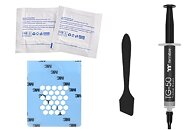
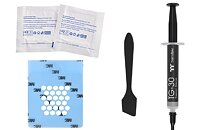
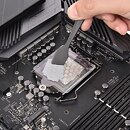
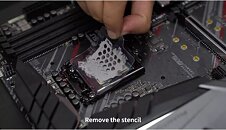
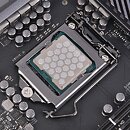
View at TechPowerUp Main Site
A unique selling point with the two is the inclusion of a honeycomb pattern stencil and a tiny spatula, which lets you apply the paste onto your CPU IHS in a neat honeycomb pattern for a Thermaltake-recommended Z-height of the application, and uniform spread under pressure from the cooling solution. Thermaltake also includes two alcohol rubs for clearing out its compound from the IHS and cooler. The company didn't reveal pricing of the two.





View at TechPowerUp Main Site








